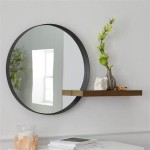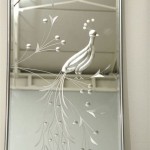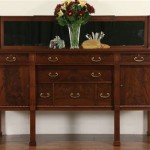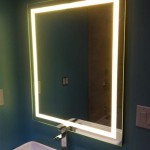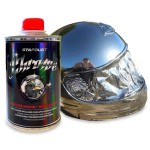Fluorescent Light Bulbs for Makeup Mirrors
Applying makeup requires precise color matching and blending, making proper lighting crucial. Fluorescent light bulbs have long been a popular choice for makeup mirrors due to their energy efficiency and bright, diffuse light output. This article examines the qualities of fluorescent bulbs, their advantages and disadvantages for makeup application, and factors to consider when selecting appropriate bulbs for this purpose.
Fluorescent lights function by exciting mercury vapor within a glass tube coated with phosphor. An electric current passing through the mercury vapor emits ultraviolet (UV) light, which the phosphor absorbs and re-emits as visible light. This process results in a significantly higher light output per watt compared to incandescent bulbs, making them more energy-efficient. The phosphor coating also plays a critical role in determining the color temperature of the emitted light.
Color temperature, measured in Kelvin (K), describes the hue of white light emitted by a light source. Lower color temperatures (2700K-3000K) produce a warm, yellowish light, similar to incandescent bulbs. Higher color temperatures (5000K-6500K) emit a cooler, bluish-white light, often described as "daylight." For makeup application, a color temperature that closely mimics natural daylight is generally preferred, typically between 5000K and 6500K. This range allows for accurate color rendering, ensuring that makeup appears true to its color under various lighting conditions.
The Color Rendering Index (CRI) is another important metric to consider. CRI measures a light source's ability to accurately reproduce the colors of objects compared to natural light. A CRI of 100 represents perfect color rendering, equivalent to natural daylight. For makeup application, a CRI of 90 or higher is recommended to ensure accurate color representation.
Fluorescent bulbs come in various shapes and sizes, including tubes, compact fluorescent lamps (CFLs), and circular bulbs. Traditional tubular fluorescent bulbs are often used in vanity fixtures above or around makeup mirrors. CFLs, designed as a more energy-efficient alternative to incandescent bulbs, can be used in standard light sockets. Circular fluorescent bulbs offer another option for fixtures designed for this specific shape.
Several advantages contribute to the popularity of fluorescent light bulbs for makeup application. Their high light output provides ample illumination for detailed work, while their diffuse nature minimizes harsh shadows. The availability of bulbs with high CRI and daylight-balanced color temperatures ensures accurate color rendering. Furthermore, fluorescent bulbs are generally more energy-efficient than incandescent bulbs, resulting in lower operating costs.
Despite these advantages, fluorescent bulbs also present some disadvantages. Some individuals find the light emitted by fluorescent bulbs to be less flattering than incandescent light, perceiving it as harsh or sterile. Another concern is the potential for flickering, which can be distracting and cause eye strain. However, modern electronic ballasts have largely mitigated this issue, significantly reducing or eliminating flickering in newer fluorescent fixtures.
The presence of mercury within fluorescent bulbs necessitates careful handling and disposal. Broken bulbs release mercury vapor, a known neurotoxin. Proper disposal methods vary by location and should be adhered to strictly to minimize environmental impact and health risks.
When selecting fluorescent bulbs for makeup mirrors, several factors warrant consideration. Color temperature should ideally fall within the 5000K-6500K range for optimal color rendering. A CRI of 90 or higher is recommended to ensure accurate color representation. The size and shape of the bulb should be compatible with the existing fixture. Finally, considering the quality of the ballast can minimize flickering and extend the bulb's lifespan.
The light output of a fluorescent bulb is measured in lumens. A higher lumen output indicates a brighter light. The required lumen output depends on the size of the mirror and the surrounding lighting conditions. For a standard vanity mirror, a total output of 800-1000 lumens is generally sufficient.
Advancements in lighting technology have led to the development of light-emitting diodes (LEDs) as an alternative to fluorescent bulbs. LEDs offer several advantages, including even higher energy efficiency, longer lifespan, and the absence of mercury. LED bulbs with comparable color temperatures and CRI values are available, making them a viable option for makeup mirror lighting. When considering the specific needs of makeup application, the choice between fluorescent and LED bulbs often comes down to individual preference and cost.

X Molin Double Side Illuminated Magnification Mirror Lighted Replacement Bulb For Cosmetic Vanity Makeup Or Sided Warm White 3k Com

G25 Led Vanity Bulbs Daylight 5000k For Bathroom Makeup Temu

Vanity Led Mirror Light Kit For Makeup Hollywood 12 Bulbs 2 Spare With Back Hanging Hooks Com

Bright Beauty 5 Light Bulbs Vanity

G25 Led Vanity Bulbs Daylight 5000k For Bathroom Makeup Temu

4 Pack Led Globe Light Bulbs Daylight 5000k Bathroom Vanity 60 Watt G25 Round For Mirrors Hollywood Makeup Non Dimmable Com

Best Type Of Lighting For Applying Makeup The Lightbulb Co

Poweka T5 22w Circular Bulb 7 25inch Round Mirror Light Replacement Compatible With Floxite Zadro Rialto Makeup Magnifying Vanity Fluorescent

Vanity Mirror Lights Kit Adjustable Color And Brightness With 10 Led Light Bulbs Lighting Fixture Strip For Makeup Table Set In Dressing Room Not Include

